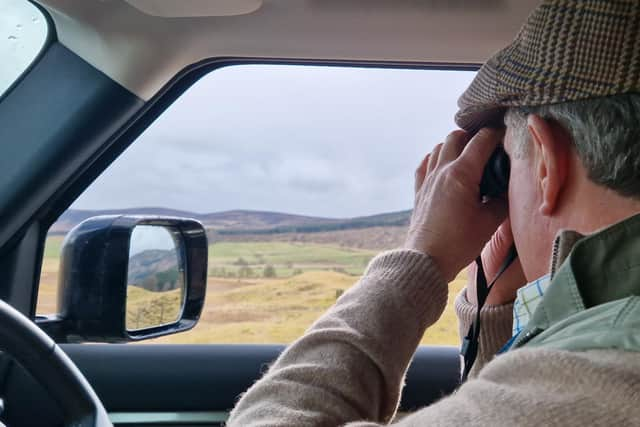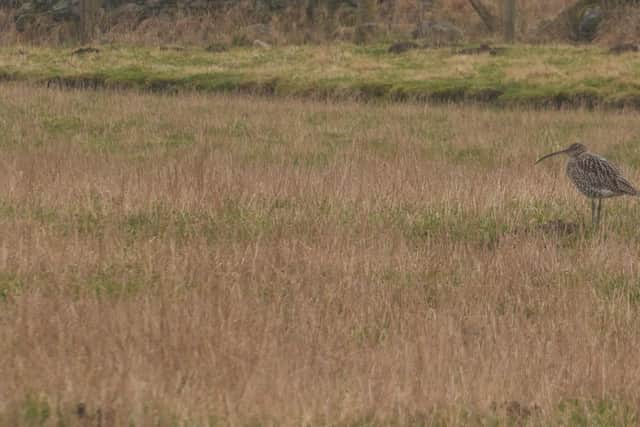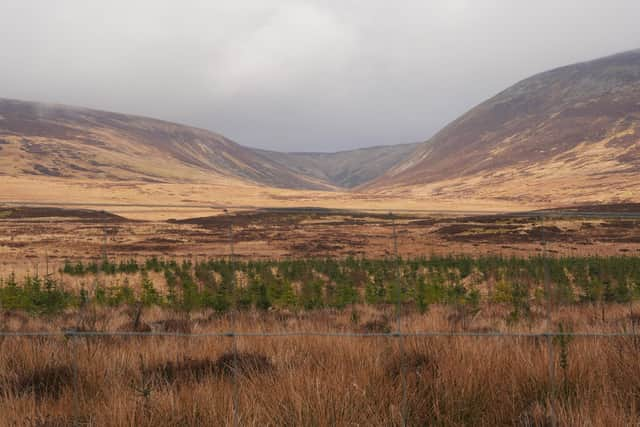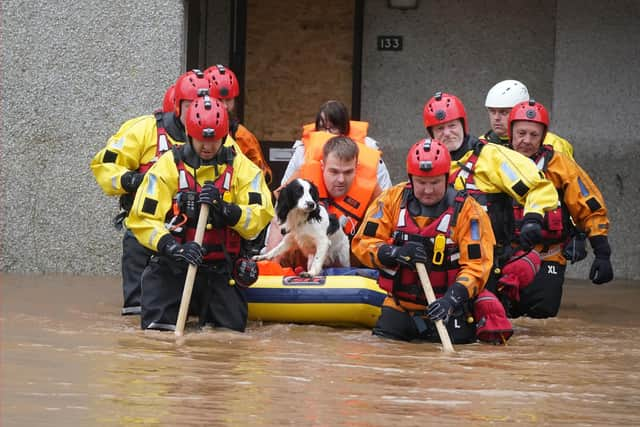Exclusive:Rottal estate: A slice of harmony in the raging Scottish wildlife management debate
Our conversation keeps getting interrupted by the cry of oyster catchers, greylag geese honking overhead and the jerky flight of lapwings catching our eye.
I am in a Land Rover with Dee Ward, the owner of the 8,000-acre Rottal Estate in the Angus Glens.
It was just coincidence that I arrived at the estate during Hay’s Way on the first day of spring. The abundance of waders, mating calls echoing through the glen and activity in the sky made it all the more clear that the seasons were shifting.


I might have had a lucky day, but without thinking too hard about what I spotted as I write, I saw lapwing, curlew, kestrel, red kite, buzzard, oyster catcher, snipe, sparrow hawk - just to name a few - in the space of about two hours.
My arrival came as SNP MSP Jim Fairlie name dropped Mr Ward in the Scottish Parliament the day the Wildlife Management and Muirburn Bill (WMMB) was passed.


The agriculture minister told MSPs: “Dee Ward does an amazing job on an upland estate while he manages to do commercial business at the same time as conserving wildlife, restoring peatland, and doing all the things that you want to do in this Bill, and he is an exemplar of how that is being done. I hope this Bill is the start of so many estates doing exactly the same thing.”
And I saw it for myself. As we were driving down a dirt track, there were clusters of yellowhammers and chaffinches among other buntings hopping alongside us through a hedgerow, as if they were showing us the way. A snipe drumming interrupted our conversation, and, shortly after, we pulled up close to a curlew which unexpectedly stayed still so I could take a picture.
We drove past areas where Sitka spruce had been cut down and left to see what “weird and wonderful” trees pushed through on their own.
Mr Ward is a big fan of natural regeneration. During a walk along the Rottal Burn, he pointed to some trees that were planted, but said most of what we saw established itself naturally.


"Now I've seen what's come through on its own, I don't think you need to plant trees, I think you should just let the natural regen come up," he said.
He explains part of the burn had to be rerouted after Storm Babet ravaged parts of Angus, flooding the only road through the glen.
But what is left is a "a much nicer burn," and a good spawning area for salmon.
Other trees on the estate, he said, have been planted as part of a riparian project to keep water up on the hill in the event of future floods.


Brechin and surrounding areas were pretty much under water during the storm in October last year. Mr Ward said the newly planted trees should create cracks in the ground to help drain the water to prevent flooding.
"Whether it will work or not we don’t know yet but that’s the aim," he said.
“If I can hold water up here, one it’s good for carbon income for me, two it’s good from a wildlife point of view, and three it should really help reduce the flooding."
The tree project, combined with ongoing peatland restoration work on the estate, should "hopefully make a big difference," he said.
The peatland work is also to increase biodiversity. The salmon and pearl mussels in the River South Esk will benefit from clearer water, which is the result of rainfall now being filtered through the peat rather than rushing off the hill down the gullies.
NatureScot confirmed the estate has seen increases in the numbers of nesting curlew and black grouse as the result of the habitat improvements, a big win as both these moorland species are in steep decline.
The government agency said the slower water flow has also improved the performance of the estate's 450kW hydro-electric scheme, providing a more consistent flow by keeping water on the hill in times of drought.
Elsewhere at Rottal roams a 30-strong herd of Highland cattle and some 300 sheep for grazing.
Mr Ward said he prefers to have a lot of rough ground which, while it might not be perfect farming terrain, it is good for wildlife.
Business is made from a steading rented out for events, including weddings, and there are some holiday cottages to let.
Grouse shoots also take place, most of which are walked-up, with some driven only when there are sufficient numbers, Mr Ward said.
"We have a range of habitats on the estate, including moorland which we keep managing as moorland as the waders, black grouse, red grouse love it," he said.
I asked him about the new Bill, which was primarily introduced to combat illegal killing of raptors, and which will establish licensing schemes for red grouse shooting. Just earlier in the day, RSPB Scotland told me a hen harrier had disappeared from the Angus Glens "in suspicious circumstances.”
Mr Ward said: "I completely understood the reasons for it, that being for raptor persecution.
"I think it [the crime] has dropped considerably over the years, but there are some people who still think they can get away with it, so to have a licensing system that can catch those people is perfectly sensible.
"I think what has gone through seems like most of the way to having a decent system which most people can live with."
I came away from Rottal to emails showing clashes over the WMMB. Some hailed it as "groundbreaking", others described it as “ruinous” for wildlife and the rural economy.
Wildlife management is highly contentious, but when describing my visit to some of those who are on all sides of the conversation, from the anti-shooting lobby to RSPB investigation teams to game conservation groups, they all tell me how "fair" and "pragmatic" Mr Ward is, and comment on the “great work at Rottal.”
He has a knack for encouraging more of a balance when it comes to nature, but also, it seems, with those who lock horns when talking about what is best for it.
I came away feeling Rottal offers a slice of harmony in Scotland's ongoing raging wildlife management debate.
Comments
Want to join the conversation? Please or to comment on this article.